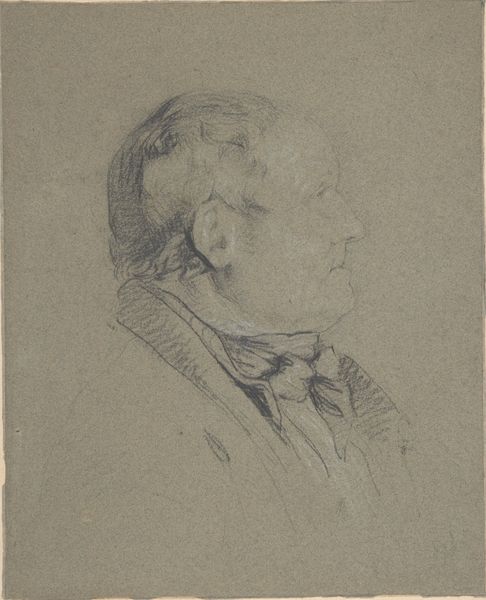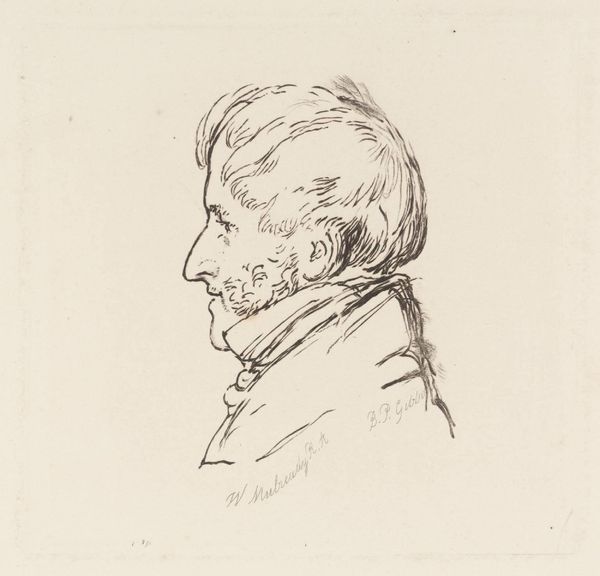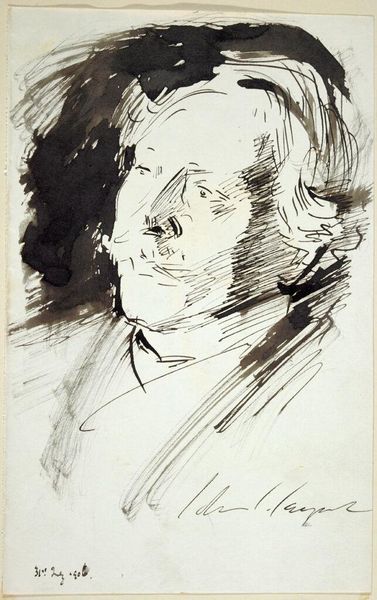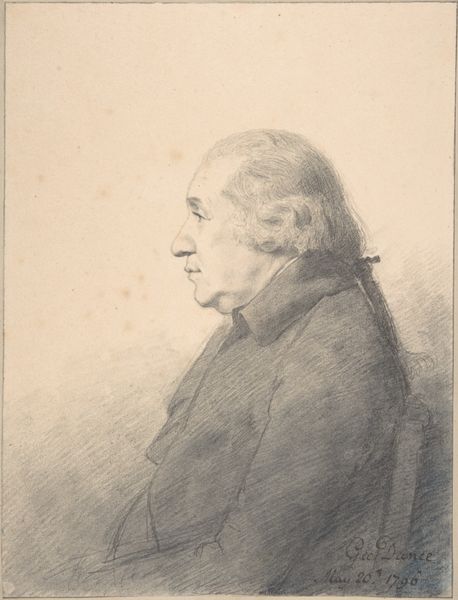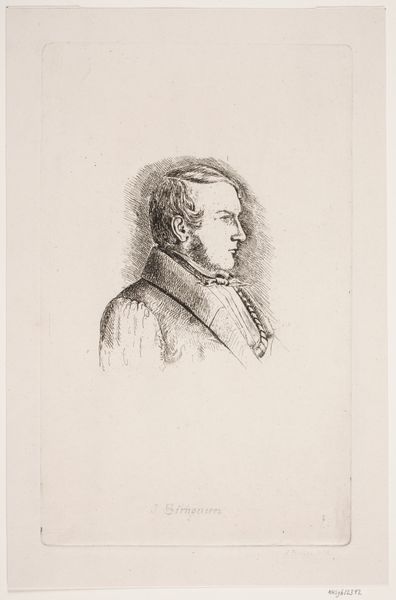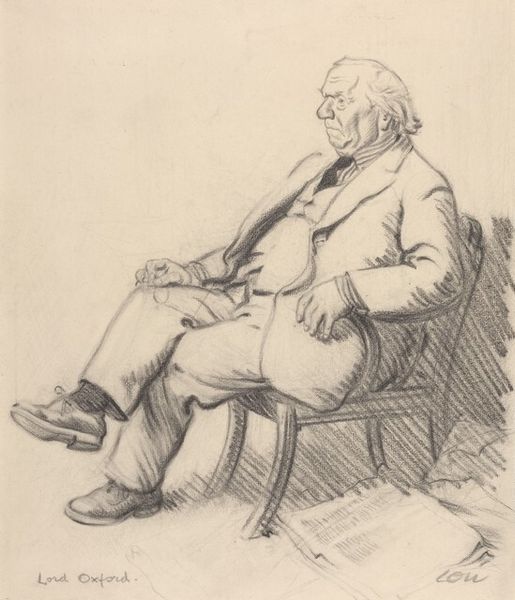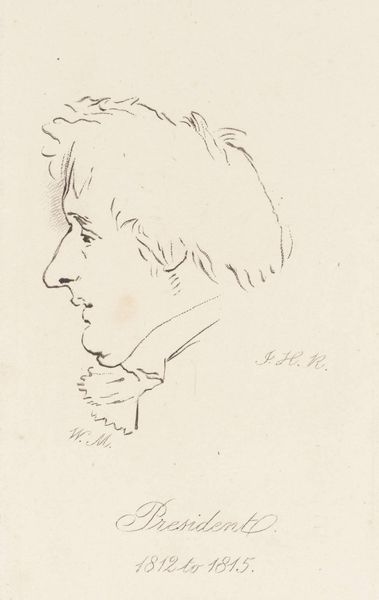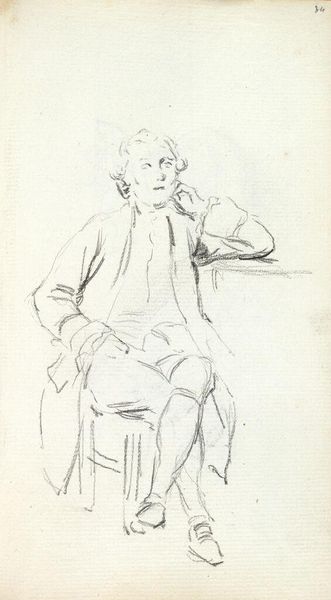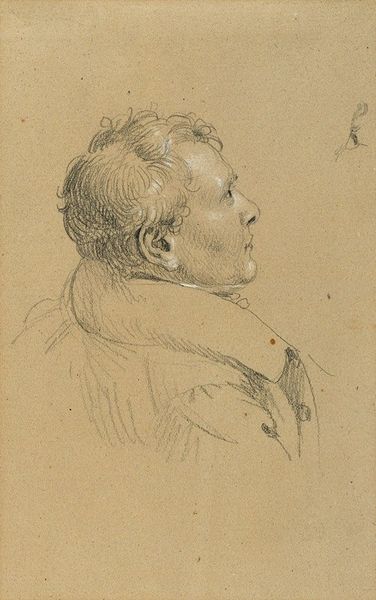
drawing, pencil
#
portrait
#
drawing
#
pencil sketch
#
figuration
#
romanticism
#
pencil
#
line
Dimensions: height 142 mm, width 120 mm
Copyright: Rijks Museum: Open Domain
Curator: Ah, this pencil sketch from 1840, "Portret van Louis Moritz" by Jan Fabius Czn. It feels like stepping into someone's private thought. Editor: Yes, it’s stark. My initial feeling is somber reflection—the sharp profile and the lines seem to carry the weight of years gone by. Curator: It has a rather poignant quality, doesn't it? Romantic, definitely. The artist really captures a sense of internal musing, as if Moritz is gazing toward an important memory. The minimal rendering contributes to this feeling; the restraint is potent. Editor: I agree; the spare use of line feels intentional. There's this very keen understanding of social expectations in portraiture, this understanding that who is being remembered in history depends very much on who can afford the sitting fee. So it’s tempting to ask how representative the subject is? The subject looks almost burdened by respectability. Curator: True, it seems Moritz is both embracing and resisting this. His pose, in a way, seems almost like a surrender. And Fabius’s handling of the pencil... I mean, look at how the quick, almost scribbled lines suggest both a vulnerability and quiet strength. Editor: Absolutely, and thinking about artistic license at the time... There were rules about what to portray. Perhaps this “unfinished” or rapid style of capturing Moritz is itself an expression, even subversion, of power. Is it honest, is it respectful, or just impatient to please the man being portrayed in an effort to create more "likeness"? Curator: It really sparks contemplation about those things. It certainly makes you wonder about the unseen dynamics between artist and sitter. And maybe, in some strange way, that incompleteness keeps Moritz eternally present and becoming. Editor: It is powerful that we still read his existence through this art object all these years later. The sketch really makes me think of what portraits leave in the visual field, which is inevitably more than the likeness, the economic position or the social status of a person in a specific context. Curator: Absolutely. Art as an intersection between memory and the making. Editor: Nicely said. These intersections have shaped the discourse around art for many centuries!
Comments
No comments
Be the first to comment and join the conversation on the ultimate creative platform.
